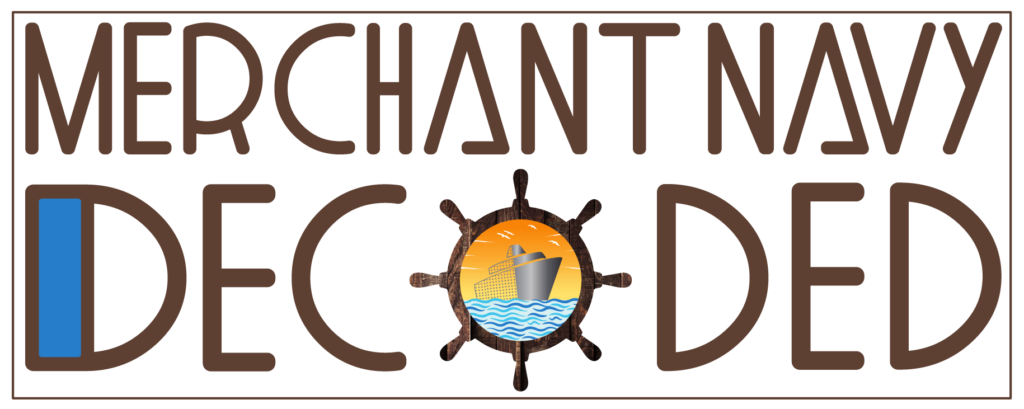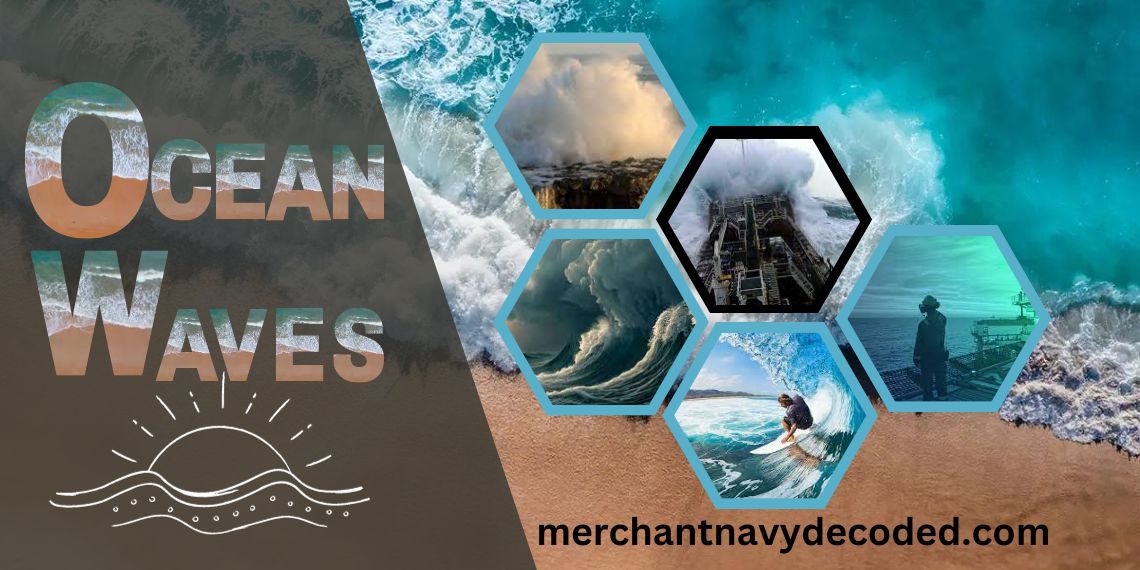Ocean Waves and its Types
Table of contents
Ahoy, fellow seafarer, have you ever wondered after gazing at the vast ocean about the mesmerizing waves crashing at the hull of the ship? If yes, well you are in for a treat but if you haven’t, still it doesn’t harm anyone to gain some extra knowledge about another wonder of nature. So, let’s get this choppy ride begin.
We will begin by understanding the characteristics of the Ocean Waves.
Characteristics of Ocean Waves
Like any normal longitudinal waves on Earth, Ocean waves behave the same and have the same characteristics like Wavelength, Wave Frequency, and Time period.
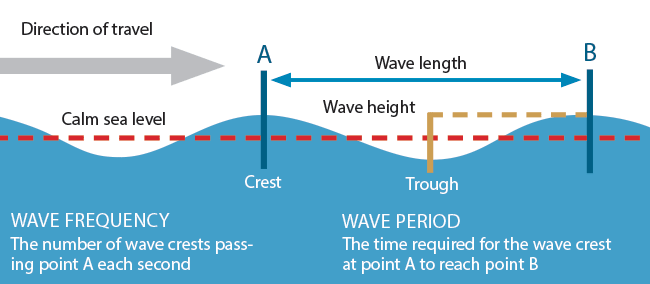
Wavelength
Wavelength is the horizontal distance between the two highest points (crest) or two lowest points (trough) of an Ocean Wave. It plays a significant role in determining the types of Ocean Waves and nature as generally when wavelength increases its speed also increases. It decides the type of wave we will be facing.
Wave Frequency
It refers to the number of Ocean waves passing to a particular fixed point in a given amount of time. It depends on the wind speed and the area of the Ocean over which it is blowing.
Time Period
The time period of ocean waves refers to the amount of time it takes for one complete wave to pass a specific point. This period is typically measured in seconds. It is an essential characteristic of waves and plays a significant role in understanding their behavior and properties.
Let’s dive into the different types of Ocean Waves we can encounter on the sea.
Types of Ocean Waves
Wind Generated
This type of wave is the most common wave out there. They are formed due to the blowing of wind over the Ocean Surface. The wind creates friction and forces the water to rise from Sea Level. It travels toward the direction of the wind. They vary in size and strength and depend on factors such as wind speed, duration, and the fetch (the distance the wind blows over the water). The wind can create from small ripples to large swells which we experience near the shore.
Tidal Waves
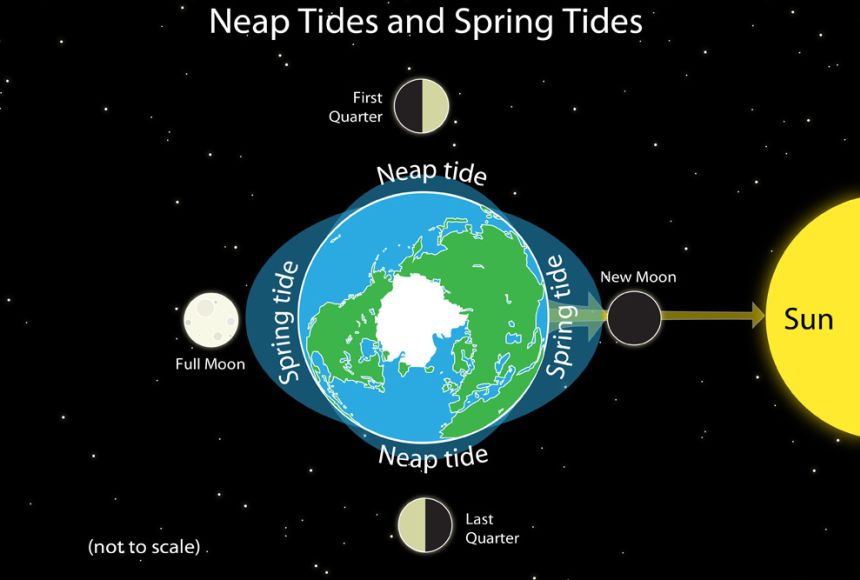
Tidal waves, often simply referred to as tides, are caused by the gravitational pull of the Moon and the Sun on Earth’s oceans. These waves result in the periodic rise and fall of sea levels along coastlines. Tides are highly predictable and occur on a daily cycle. There are two main tides that are higher or lower than average. They occur twice monthly and are called neap and spring tides.
Tsunamis
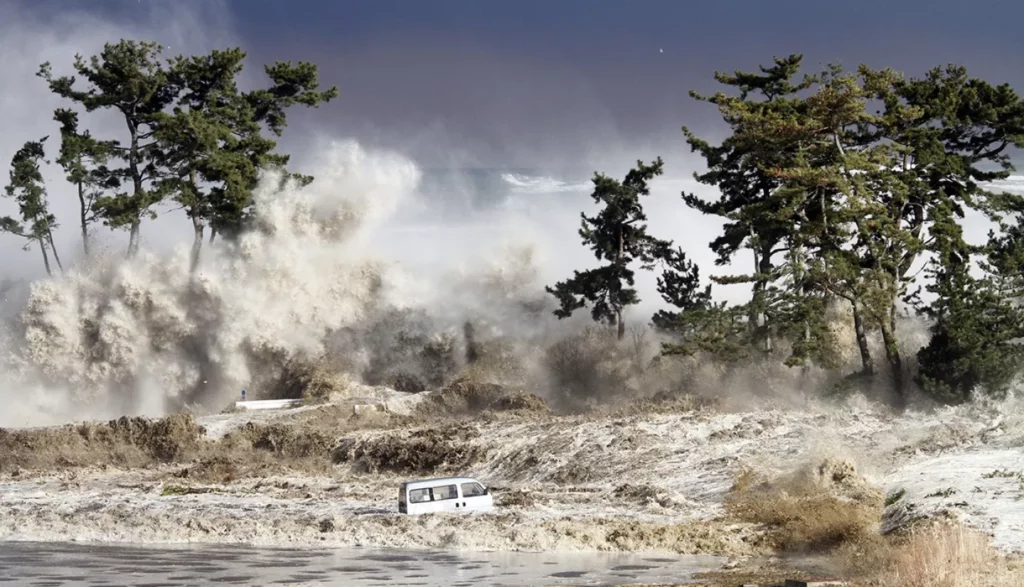
Tsunamis are powerful waves generated by earthquakes, underwater volcanic eruptions, landslides, or even meteorite impacts. Unlike waves generated by winds, tsunamis have very large wavelengths and can travel the whole ocean impacting very large areas. They can be highly destructive when strike the land. For instance, the Tsunami of 2011 which hit Japan caused by an Earthquake of 9.0 magnitude took the life of thousands of people.
Swells
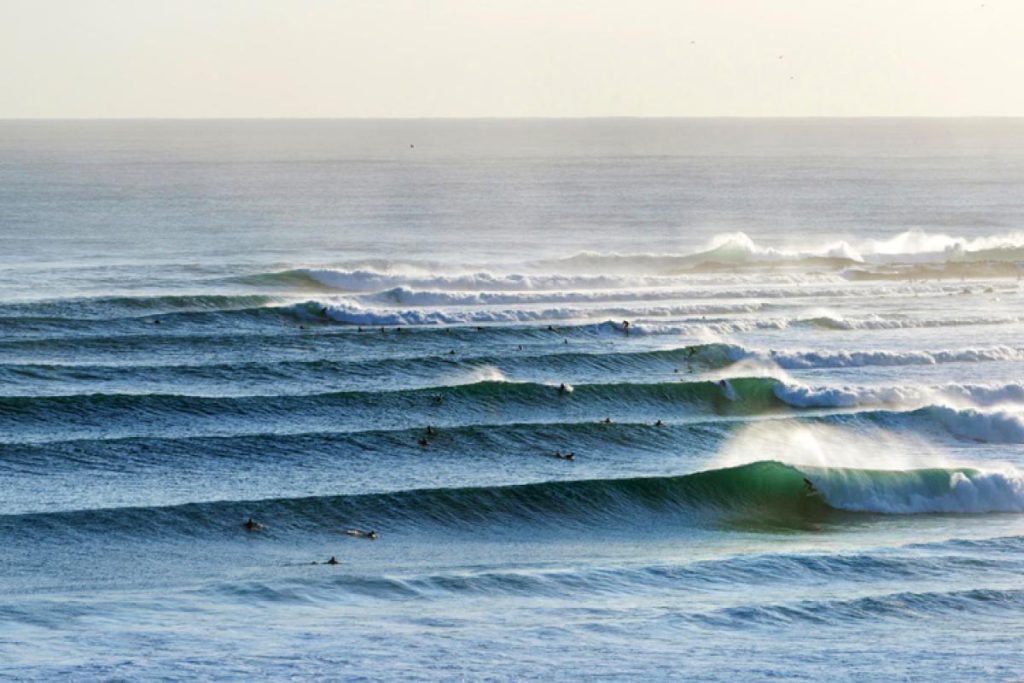
Ocean swells are a type of wave pattern found in the open ocean. They are characterized by a regular and well-organized series of waves that travel over long distances. Swells, in a fixed pattern, are a type of wind-generated waves and are generally viewed as the first sign of a storm at a far distance. Unlike wind-generated waves, swells are more predictable and offer smoother, less choppy wave faces, making them ideal for activities like surfing and sailing.
Role of Ocean Waves in Earth’s Climate
Ocean waves affect our climate in numerous ways, for instance:
- These waves are the ones who are responsible for distributing solar heat more evenly across the Earth. Such that it won’t overheat at one place on Earth and maintain the optimal temperature for marine organisms.
- They also affect wind nature ultimately affecting our weather patterns. We have clouds & precipitation due to these ocean waves affecting the wind pattern & cloud formation.
- Ocean Waves are also responsible for circulating the ocean water across the globe hence resulting in the formation of Ocean Currents. They are not only responsible for world trade but also crucial for marine life and climate. They also allow marine animals to migrate from one place to another.
Conclusion
Ahoy, we met again. If you are still reading this then it means that you have increased your knowledge about these wonderful waves traversing across the Ocean. But they are not the only thing counting miles and miles on the ocean, there is something else i.e. Ships. These towering giants travel across the countries and continents carrying day-to-day requirements. There are various types of Ships on the ocean. The ones who control these ships and conquer the giant waves are amazing seafarers who have opted for specific Courses in the Merchant Navy. So, next time you head out at sea for surfing or on Ship just take a minute and appreciate these waves of life.
Disclaimer :- The opinions expressed in this article belong solely to the author and may not necessarily reflect those of Merchant Navy Decoded. We cannot guarantee the accuracy of the information provided and disclaim any responsibility for it. Data and visuals used are sourced from publicly available information and may not be authenticated by any regulatory body. Reviews and comments appearing on our blogs represent the opinions of individuals and do not necessarily reflect the views of Merchant Navy Decoded. We are not responsible for any loss or damage resulting from reliance on these reviews or comments.
Reproduction, copying, sharing, or use of the article or images in any form is strictly prohibited without prior permission from both the author and Merchant Navy Decoded.

